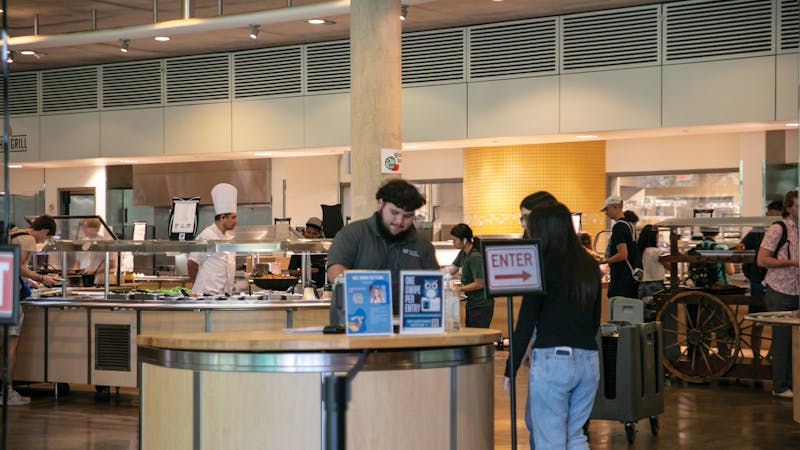I-slate electronic tablets to bring low-cost education to Indian district
Local government officials in India announced plans to adopt 50,000 I-slates - low-cost educational tablets created and developed by Rice University faculty and students - for use in middle-school classrooms over the next three years.
Officials announced plans for the I-slates' adoption in the Mahabubnagar district on March 19.
The I-slate is an electronic learning instrument designed primarily for supplementary self-education in classrooms that lack electricity and enough teachers. Social media and video game elements were incorporated into the user-interface to cater the tool for children's education and entertainment.
The idea for the I-slate was conceived by Rice's Ken and Audrey Kennedy Professor of Computer Science Krishna Palem in 2008, according to a Rice news release.
Palem developed the tablet in conjunction with Rice undergraduates, experts from Nanyang Technological University in Singapore, members of the Indian nonprofit organization Villages for Development and Learning Foundation and a Los Angeles-based design team.
"Initially, I was thinking of a way of demonstrating the low-power, low-energy technology that I was working on as a technologist," Palem, a visiting professor at NTU and chair of the Rice-NTU Institute for Sustainable and Applied Infodynamics, said.
Palem said he decided to create the I-slate for middle-schoolers after meeting another American university professor who was helping to improve the education of 10th graders in India.
"There are two main concerns for schools in India: the need for good teachers, which is hard and true everywhere, and a need for sustained energy - electricity - to work with technological devices," Palem said. "Those two concerns helped me to frame the idea for the I-slate."
After conceiving of the idea for the I-slate, Palem taught a computer science and chemical and biomolecular engineering course consisting of five or six undergraduates called "Information and Communication Technologies: Designs for a Sustainable World." Students in the course helped with improving aspects of the user experience and analyzing how effective the tablet was at educating the students by utilizing studies from cognitive psychology and human-computer interactions.
"I'm very grateful that the computer science department at Rice offered me the opportunity to teach this course and work with really great undergraduates," Palem said. "The details of what alternate ways there were of solving the problems with [the I-slate] came out of the course."
However, Palem added that all the hardware and prototyping was done out at NTU in Singapore.
Sid Richardson College senior Lauren Pemberton, who took the course as a sophomore, said that she and other students taking the course had to research what educational approach would be most suitable for the I-slate and gather results on the effectiveness of the device.
"[The students] are in such a unique environment - unreliable electricity, few teachers available, and reading and speaking only Telugu - that we had to make sure that our device's features would fit their learning style," Pemberton said. "It needed to grab their attention and be interactive while also reinforcing math concepts from their workbooks."
The Mahabubnagar district in India has approximately 500,000 students in government schools. The rural district has a total population of approximately 4 million. The unit cost for the I-slate will be around $45, Palem said in a Rice News release.
This month, approximately 30 fourth-generation I-slates were delivered to a class of 10- to 13-year-olds at a school in the district.
Chairperson of ViDAL Rajeswari Pingali selected the district that would receive the I-slates.
"Some of the major issues impeding development in this region include: caste, politics, illiteracy, uneven rainfall and development imbalances," Pingali said. "The infrastructure - roads, schools, piped water, sanitation, clinics and public transport - is in poor condition and stretched to the limits in the villages."
Pingali noted ViDAL's focus as an organization on information and communication technologies.
"Our role was to see technology from the user's side - not only the feel of it, but several other attributes like simplicity, suitability and then if it will become a tool for enhanced learning," Pingali said.
Pemberton said she was excited to find out that a significant number of students will have the opportunity to benefit from the I-slate.
"I am glad that our work these past two summers has made a difference and helped this project get off the ground," Pemberton said.
Palem was grateful for the partnerships that have formed as a result of developing this project.
"I think the partnerships we've established, with this mix of undergraduate research students and this international network that we have established in Singapore, have made a valuable contribution to the I-slate," Palem said. "This is just my way of thanking them."
More from The Rice Thresher

Dis-O, move-in weekend see increase in alcohol transports from last year
Rice’s first wet weekend of the year saw four times as many calls for intoxication-related transports of students to the hospital compared to the previous three years, according to emails sent out by college presidents and chief justices.

On-campus meal plan changed to unlimited swipes
Housing and Dining recently revealed a new dining plan for the upcoming semester. The required on-campus meal plan now has unlimited meal swipes, compared to 375 meal swipes last year. H&D said the previous on-campus meal plan was for students who intended to eat on campus 15 to 25 meals a week.

Rice Stadium student section relocated
The Rice Stadium student section has been relocated to sections 106 and 107, according to an announcement from Rice Athletics on X.

Please note All comments are eligible for publication by The Rice Thresher.